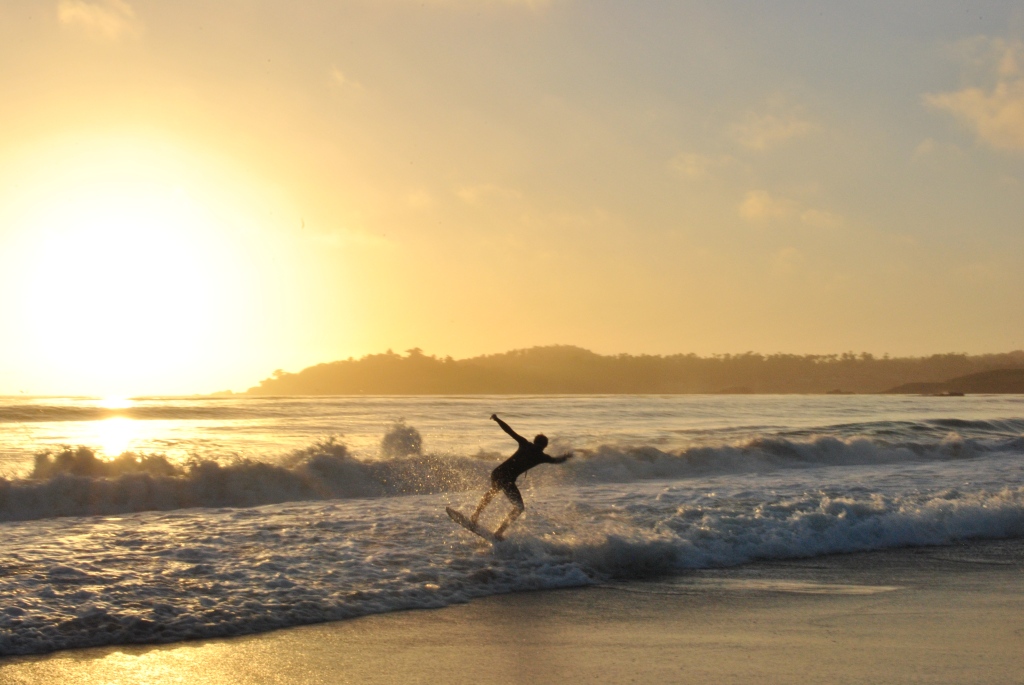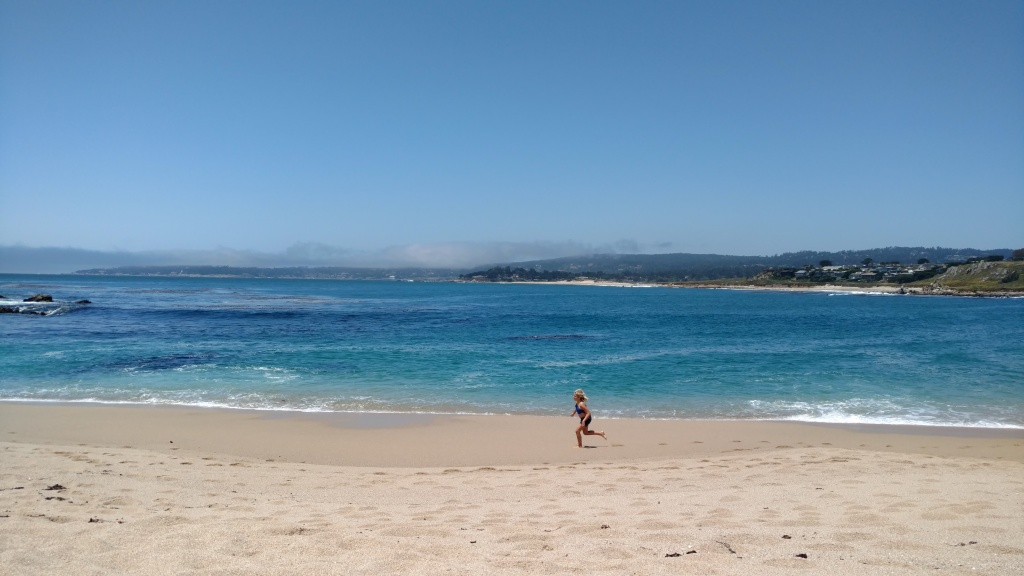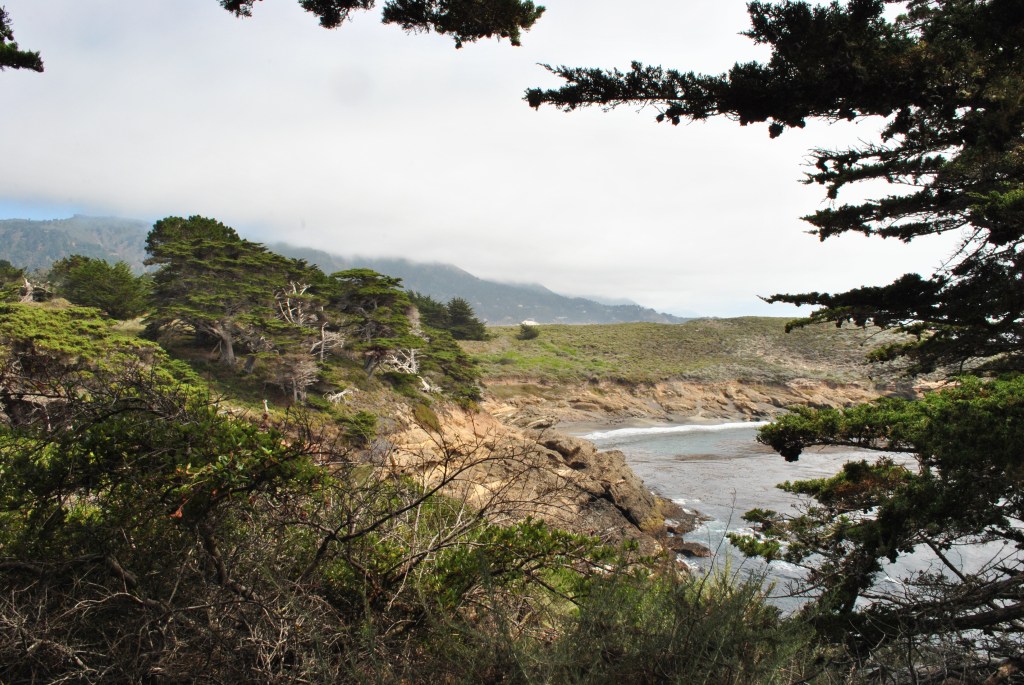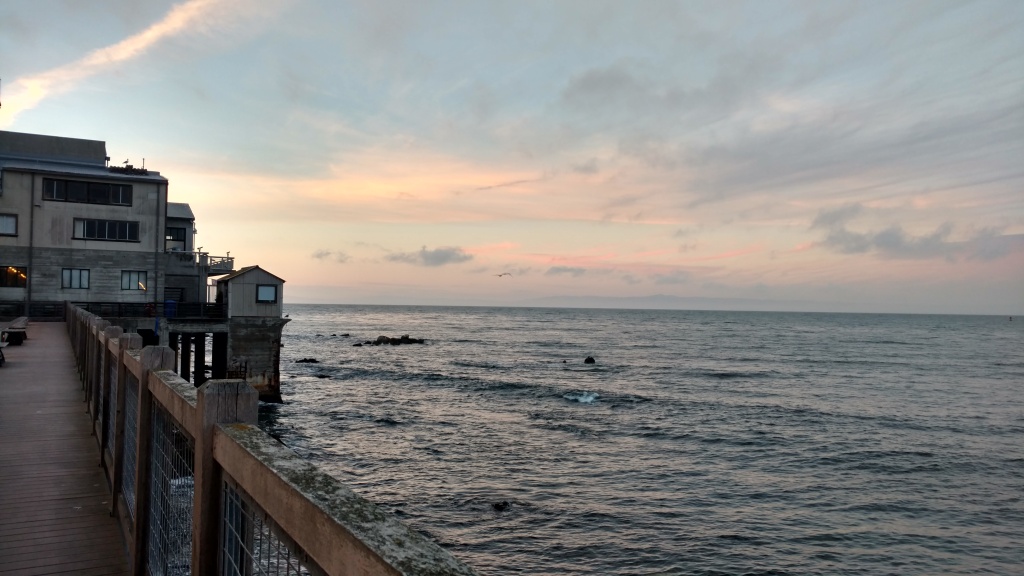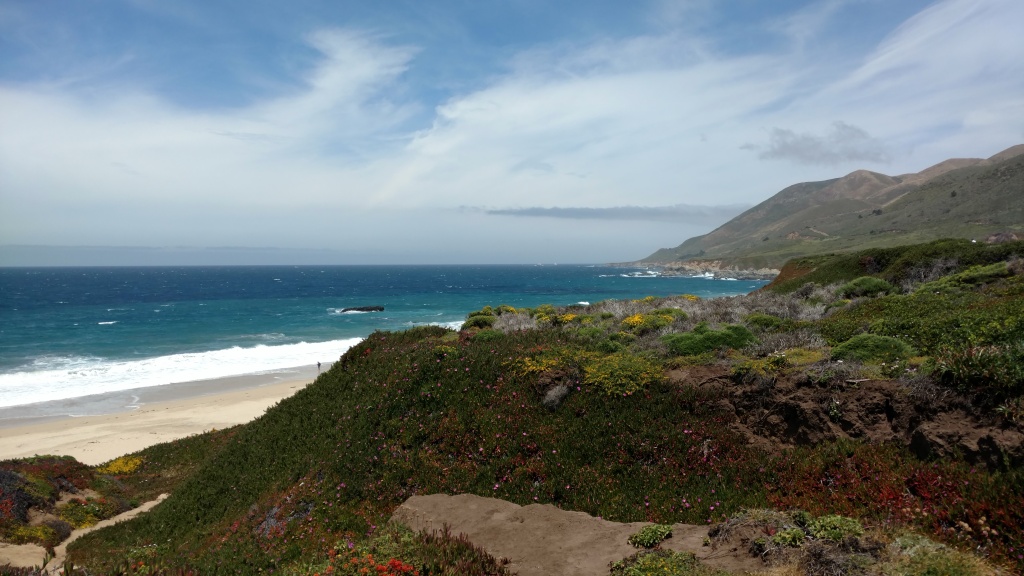Monterey, California, was beautiful. Coming from central North Carolina, where there are few distinguishing natural features, it didn’t feel real to live in such a place. The rocky shoreline, foggy days, and spectacular sunrises and sunsets felt special.
The best thing, and what I miss the most, was the aquatic wildlife. There was never a day by the water where I didn’t see otters, fluffing up the fur on their furry little bodies; seals, curled like smooth, content commas on sunny rocks; and sea lions, barking or dozing in a pile. I went kayaking once at Elkhorn Slough. A seal surfaced in front of my kayak and gave me a suspicious look before diving away. And one afternoon, lounging at Carmel River State Beach, a humpback whale gracefully looped its way through the choppy water 50 yards offshore. It all felt so strange, like these creatures should be rare sightings, but they were all just…there!
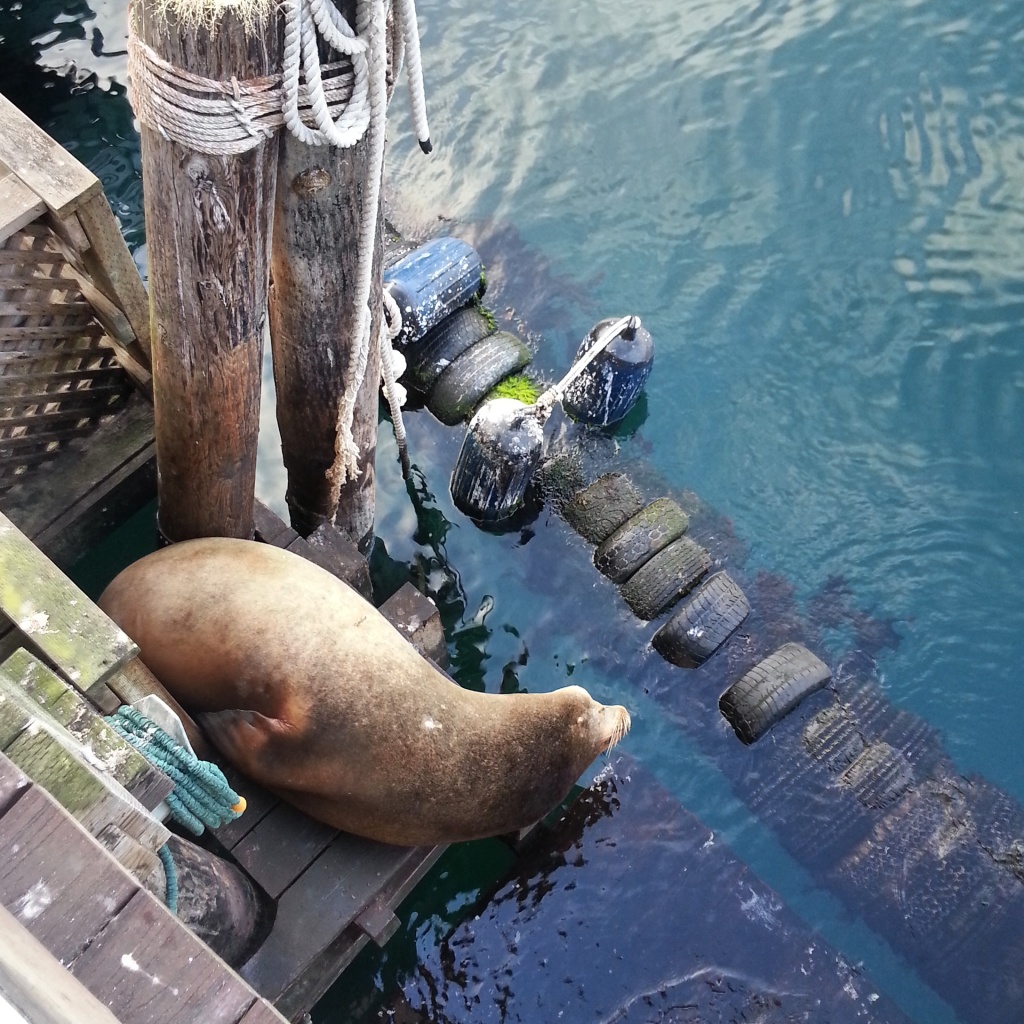
You’re essentially guaranteed to see whales on the various available tours. It seemed insane to bob in a boat while humpbacks many times our size surfaced around us. And I thought about how we were just getting a glimpse of activity at the surface. What kind of otherworldly creatures lurked below? According to the Monterey Bay Aquarium Research Institute (MBARI), the depth of Monterey Canyon rivals that of the Grand Canyon.
Where to go to see wildlife
Unless you can travel safely and responsibly during the COVID-19 pandemic, please use these recommendations to plan for future travel when risks have lessened.
You’ll see creatures just by walking along the water.
- The prime spot (and the most crowded) is Fisherman’s Wharf in Monterey. In the water you’ll see otters and maybe starfish, jellyfish, and crabs. The seals usually sun on the rocks in the shallow areas of the cove at low tide. The sea lions (which are bigger than the seals and have cute little ear flaps) usually hang out on the Coast Guard Pier but sometimes on the lower levels of Fisherman’s Wharf and Municipal Wharf 2. You can walk to the viewing platform on top of the Big Fish Grill at the end of the wharf and walk down the steps to water level. (If there are sea lions or other creatures resting there, do not approach!)
- From Fisherman’s Wharf, continue to follow the water along the Monterey Recreation Trail toward Pacific Grove and Asilomar State Beach. (Watch out for cranky cyclists!) Along the way, it’s also common to see wildlife behind Hopkins Marine Station at Point Cabrillo.
- To learn more about the wildlife around the bay, I highly recommend the Monterey Bay Aquarium. It’s a phenomenal space that includes an otter exhibit, a live kelp forest, an exhibit of rehabilitated sea birds (the plump little snowy plovers are my favorite), and much more.
You can get closer to wildlife by going on the water. There are various whale watching tour operators based on Fisherman’s Wharf and many kayak rental companies in the area.
Recommendations
- Follow MBARI on Instagram for incredible footage of deep-sea creatures.
- Follow the Monterey Bay Aquarium on Instagram for information about the animals in the aquarium, as well as in the surrounding geographic area. Their YouTube channel also has live video feeds.
- Watch Finding Dory. The creators drew inspiration for the settings (the aquarium and kelp forest) from Monterey Bay.
- Listen to the Amateur Traveler Podcast Episode 731: Travel to the Monterey Peninsula for general travel ideas.
- Read John Steinbeck, the author from nearby Salinas, California. Truthfully, I haven’t read as much Steinbeck as I’d like (East of Eden and Of Mice and Men many years ago and Travels with Charley more recently) but Cannery Row, which takes place in Monterey, is on my list!
Have you ever been to Monterey? What kinds of creatures did you encounter?
